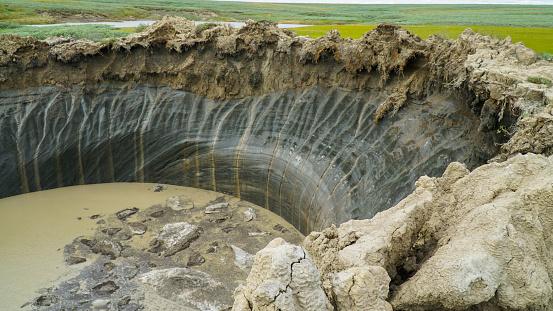Science fiction or reality in our backyard? It is not new that scientists are questioning the relationship between climate change and the increasing number of epidemics worldwide. Researchers tried to understand this situation by studying samples taken from frozen soil. Whether the reemergence of viruses that have been inactive for thousands of years poses a risk to humanity.
As the planet’s temperature rises, thousands of years old glaciers are melting, bringing to light deadly viruses still unknown to the human race. Learn about some of the resurgent viruses and whether they may be a threat.
What is permafrost?
Permafrost is a layer of soil that tends to remain permanently frozen. At sub-zero temperatures, mud can contain rocks, ice, sediment and organic matter, providing an ideal environment for the preservation of such materials.

It covers approximately 20% of the Earth’s surface and is most easily accessible from Canada, Russia and the Boreal Forest of Alaska. However, with global warming, this ice sheet reveals its secrets..
It stores large amounts of organic matter, some animals, plants and even humans, bearing traces of organisms that have not been able to roam freely for thousands of years. But is this a risk?
A zombie story
Technically viruses are not alive. Think of them as something that can be turned on and off. Under certain conditions, viruses evolve and can turn into multiple copies of themselves. However, they may become ineffective at low temperatures and unfavorable environments.
However, in some cases, this inactivity is not permanent. This is the case with viruses identified in the remains of mammoths, wolves, and even humans.. This isn’t a Halloween story, but it can be a little scary. These viruses have the ability to ‘come back to life’ and re-infect living beings.
‘Zombie viruses’
Various studies with permafrost samples have found very interesting viruses, as they not only come back to life, but also have gigantic sizes. Meet five different zombie viruses!

Pandoravirus yedoma
Old people first! Pandoravirus yedoma is the oldest virus ever reactivated. This microorganism, dating back 48,500 years, was found in samples taken from a lake in Yekuchi Alas, Russia.
Belongs to the Pandoraviridae family, This 1-micrometer giant virus has very interesting features, such as protein-coding genes that are not yet well known.. Most of the viruses ever found in permafrost belong to this family.
mammoth megavirus
Megavirus mammoth and two other viruses, Pithovirus mammoth and Pandoravirus mammoth, were found in the fur of a 27,000-year-old mammoth. These giant viruses that infect amoebas are harmless to humans.

Cedratvirus lena
Cedratvirus, also belonging to the Pithovirus family, was found in permafrost samples in the Russian Far East. According to the research, at least 3 types of the virus could be detected..

pacmanvirus lupus
If you thought about Pac-man, it was not in vain. This virus was found in the intestinal sample of a 27,000-year-old Siberian Husky.

Its shape resembles the famous figure from the 1980s video game where the protein chain breaks. From its location and format, the terminology was born: Pacmanvirus lupus. It is a distant cousin of African swine fever viruses from the family Asfarviridae.
Mollivirus sibericum
A super breeder. This 30,000-year-old virus managed to produce 200 to 300 copies of itself per amoeba it infected.. It has a spherical shape and a hairy surface that makes it look like a fuzzy ball.
Risks to Humanity
You ‘zombie viruses are not capable of infecting humans and other animals. For their resurrection tests, the researchers selected only those that interacted with amoebae.
However, in the not too distant future, with global warming and melting ice, other viruses will also emerge. and these are pathogenic, can return to the event. Therefore, screening and research are essential so that we can protect ourselves and prevent future outbreaks.
Is there anything you want to ask? Tell us on our social networks and get the opportunity to share the article with your friends.
Source: Tec Mundo
I’m Blaine Morgan, an experienced journalist and writer with over 8 years of experience in the tech industry. My expertise lies in writing about technology news and trends, covering everything from cutting-edge gadgets to emerging software developments. I’ve written for several leading publications including Gadget Onus where I am an author.












